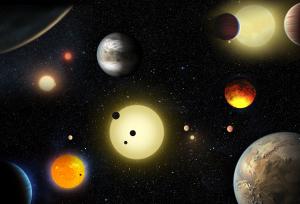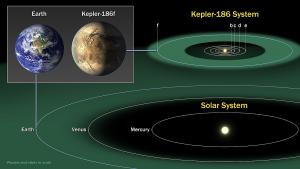A New Statistic For Earth-like Exoplanets
Over the past several years, exoplanet hunting has become all the rage, and rightfully so! Are we alone in the Universe? That is a powerful question, possibly one of the most game changing questions of our existence. It is the question that drives so much of our research and exploration. The implications of that question illicit both excitement and fear, for numerous reasons. Over the past decade, numerous missions have been launched on the premise of that question, with the goal of finding planets similar to Earth that exist outside of the Solar System.
An exoplanet is defined as a planet that resides outside of the Solar System. A planet that does not orbit the Sun. To date these mission have discovered 4,103 confirmed exoplanets, spanning 3,056 star systems, and we are just getting started! This result has seriously intensified our search for extraterrestrial life, creating a significant focus on exoplanets that reside in the habitable zone around a star. The habitable zone is defined as the orbital distance from a star where temperatures allow for liquid water to exist on the surface of a planet, a key requirement for life as we know it. Any exoplanet we find in this region we catalog as an “Earth-like planet”. But what about the size of these exoplanets?
Many of the Earth-like planets we discover are quite large, and are considered super-Earths, though how many Earth-sized planets exist in the habitable zone around stars in the galaxy? Additionally, most of the exoplanets we have discovered exist around red dwarf stars, but how about Sun-like stars? How many Earth-sized planets that reside in the habitable zone around a Sun-like star are out there? This is the question that a team of researchers at Penn State University recently set out to answer.
Using data from the NASA Kepler mission as well as improved star properties data from the European Space Agency (ESA) Gaia mission, the team was able to estimate that one-in-four Sun-like stars in the Milky Way galaxy have a planet 0.75 – 1.5 times Earth’s diameter with an orbital period of 237 – 500 days that resides in the habitable zone. Let’s think about that. The Milky Way galaxy has about 200 billion stars, of which 10% are Sun-like, resulting in about 20 billion Sun-like stars. If every four of these stars have an Earth analog (Earth twin), that gives us around 5 billion Earth-sized planets in the Milky Way galaxy that orbit a Sun-like star in the habitable zone!
This statistic will help future exoplanet hunting missions to optimally develop to an expectation of exoplanet discovery. As more of these seemingly Earth-analog exoplanets are discovered, the need to analyze their atmospheres will become a pressing priority. Once that capability exists, we will be able to search for signatures of extra terrestrial life on these distant worlds. The rate at which we are moving in this area could place the discovery of extra terrestrial life in our lifetime, and finally offer an answer to that big question.
Catch up on some of the leading exoplanet missions and databases:
NASA Transiting Exoplanet Survey Satellite (TESS)
NASA Kepler Mission
NASA Exoplanet Archive
- Author:
- Scott MacNeill
- Entry Date:
- Aug 28, 2019
- Published Under:
- Scott MacNeill's Columns




